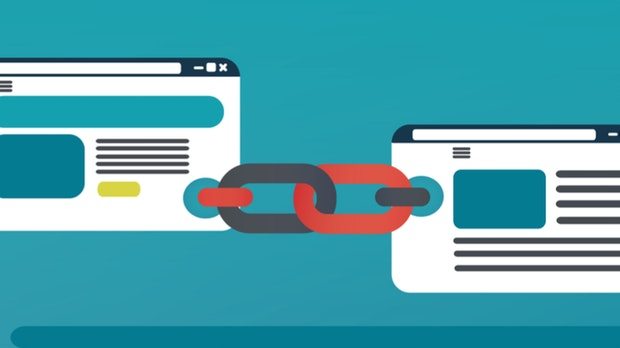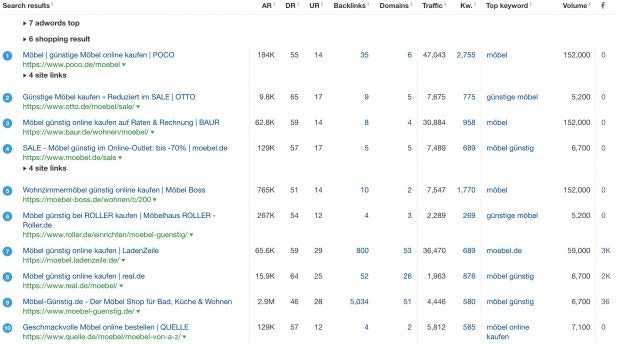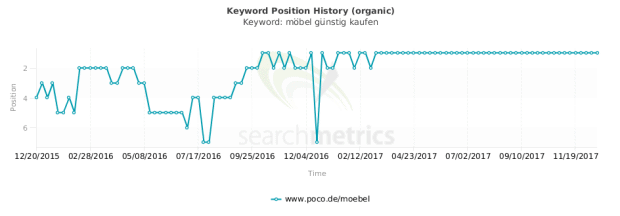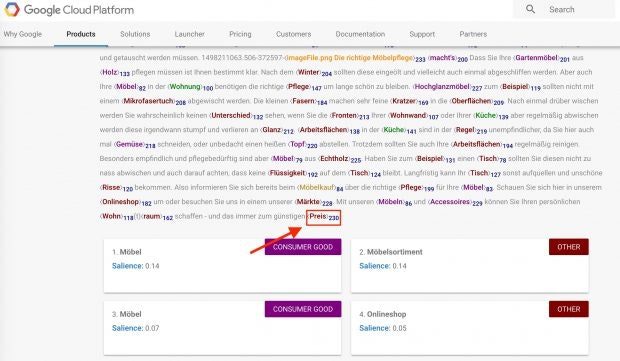
Google is increasingly using Artificial Intelligence and machine learning to calculate search results. This has consequences for search engine optimization. What SEO managers need to know.

With the research project “Google Brain” and the takeover of the AI specialist “Deepmind,” Google has positioned itself years ago in the field of Artificial Intelligence. Ever since CEO Sundar Pichai officially announced the move from “Mobile First” to “AI First” in 2016, it is clear that KI will shape all areas of the Group in the future.
This also applies to search engine optimization, in which machine learning, a sub-discipline of Artificial Intelligence, is becoming increasingly influential. Algorithms are increasingly controlled by the AI system “Rankbrain” and enable the search engine, even to learn. So Google is getting better at yet unknown – so never asked – to answer queries. These makeup at least 15 percent of the total search volume.
For SEO result from this development paradigm changes, which suggest some longer. These include, in addition to the focus on content quality – and the way Google measures them – the decreasing importance of backlinks and the increasing dominance of the user intents, i.e., the search intentions in individual cases.
An evolved form of keyword density
Since Google’s massive offensive against link spam and active link building, SEO executives are turning more and more towards content and technical SEO. The more complex the requirements for good content have become. While “keyword stuffing” was part of the fixed repertoire for a long time, this practice in 2019 will only result in manual penalties. Artificial Intelligence now allows Google to measure content quality using the so-called “co-occurrence,” a highly advanced form of keyword density. Co-occurrence goes far beyond the pure frequency of a keyword. Instead, it describes the semantic distance between two words, so quantify how closely related they are: the higher the co-occurrence, the better.

With more than 130 trillion websites found, Google has the data set needed to determine the semantic distance between words accurately. Also, Rankbrain helps the search engine understand the meaning of a word in the context of the search query, such as whether the keyword “apple” means the fruit or the company. The adaptive system can also interpret synonyms and previously unknown search queries correctly – across multiple languages.
If content for a specific topic is to rank, they must also pick up the relevant subtopics to achieve a high degree of co-occurrence. In computational linguistics, subtopics are referred to as “entities.” These can be objects of all kinds, from brand names to people and objects to places. A text about cars, for example, should also serve the entities “tire,” “paint color,” or “km / h.” The more relevant the objects and the more complete their description within the text, the higher the quality of the content. In recent years, the term “holistic,” i.e., holistic content has come up.
Two parameters determine the degree of holistic: depth and width. The former describes how extensively each entity is treated in one text, the latter the number of subtopics. The optimal depth and breadth vary from keyword to keyword.
For example, the website www.poco.de/moebel has been robustly ranked at position 1 for more than a year for the keyword “furniture for cheap online shopping .” According to the Ahrefs analysis tool, it also manages 2,755 additional keywords, bringing massive traffic. Based on the ranking history, it can be reconstructed that Poco must have made changes to the bottom in August 2016, which brought the ranking up and since then kept it continuously. And in fact: found in August 2016, a concise, weak content text at the bottom of the bottom, today’s version is extended, helpful and serves all the relevant subtopics.
Some SEO managers will now argue that backlinks may be the deciding factor in this case. The backlink profile of poco.de/moebel does not provide any evidence for this assumption. On the other hand, text analysis using Google’s Natural Language Processing API is more interesting: it recognizes around 230 entities in the page text, including “wood”, “real wood”, “wall units” or “work surfaces”, but also objects such as “care”, ” Microfiber cloth “,” vegetables “or” pot “. By comparison, the text on Otto’s furniture page, which ranks 2nd in “Furniture buy cheap online,” brings it to only 145 entities.
The new bouncer: Search intent
The keyword used in the example “buy furniture online at a reasonable price” points to another area of search engine optimization, which is increasingly coming to the fore through artificial Intelligence and machine learning. The user intent, that is, the real intention behind a search query hides. Traditionally, a distinction is made between three plans: navigational, transactional, and informative. The user either uses Google to navigate to a page (“Lord of the Rings Amazon”) to buy something (“cheap sneakers for women”) or to find out something (“When was the Thirty Years’ War?”).

This classic subdivision is outdated. Nowadays, search engines are used for much more: from local search queries with navigation intent like “sushi restaurant” over inspiration – “Halloween costume ideas” -, instructions, recipes, videos or short information requests – “weather”, “Chancellor” – up to lists and rankings, such as “the best project management tools”. Artificial Intelligence enables Google to understand better and more differentiated user intentions behind the naked keywords and to embed them directly in the search results.
For example, the keyword “Röbel Fröbel with Schnörkranz,” which refers to a sketch by Christian Ulmen and Nora Tschirner, explicitly provides video-related results. Five out of ten snippets are video snippets, four of the search results come directly from Youtube. Search queries such as “living room ideas” rank – in addition to the Group’s own Google Images gallery – otherwise only pages with picture galleries. Because: Google’s algorithms have learned that users in these cases expect visual inspiration in the Pinterest style.
Likewise, transactional search queries are clearly recognizable to Google, even without any signs of buying motivation. For example, the keyword “car tire” is seen by Google in precise relation to “buying a car tire,” as the results page shows: Nine out of ten results come from shops where you can buy car tires. Rankbrain also understands the user intention for new keywords in most cases correctly and designs the SERPs accordingly. The chances of ranking for a keyword whose user intent requires a different form of content are small and smaller.
The search intention of the users should not only flow into the keyword research but should also be considered in the planning and creation of the page content. Is the offer excellent? Are the pictures really inspiring? Do the videos have good quality? SEO managers can no longer avoid these questions: only if their page clearly addresses the user intent, is there a chance that users will be satisfied and will stay – and thus send further signals to Google that positively influence the page ranking.
Holistic content is needed
In this context, the change of meaning in the subject of backlinks is refreshing. Integral content has been pushing backlinks as a ranking signal for quite some time. Nevertheless, they are still far from obsolete: After all, Google uses links for crawling, so it finds new and old pages by following references. Also, some link building tactics are reportedly still working well. Even link purchases and exchanges seem to increase rather than decrease: not least because of Google’s strategic decision not to repudiate spam links, but simply to ignore them. If you do not have to fear punishment, try it – in the hope of getting through it one or the other.
The fact is, just as with keyword density, the sheer number of backlinks is far from crucial. This proves another look at the keyword rankings. Even today, the top positions in the organic search results have very different link profiles. For example, for the keyword “buy cheap furniture online,” we’ll see the URLs with the most active links more in the back positions. Even for highly competitive keywords such as “credit card comparison,” with a monthly search volume of about 27,000, backlinks no longer seem to be the deciding factor, as Ahrefs shows.
While the frontrunner has just 49 backlinks and 23 domains, it creates the URL with 199,238 Backlinks, and 100 areas only ranked 6. It looks like the keyword “apartment,” which has a monthly search volume of around 247,000. For the highly competitive keyword, the top ten sites have built a variety of backlinks. For example, Fewo-direkt.de brings it to more than 14 million. At position 1, however, a URL with just ten backlinks links up with ferienwohnungen.de – and thus the second weakest link profile within the top ten.

Other factors are gaining importance. A Semrush study from 2017 shows that ranking signals such as the average length of stay, the click-through rate, the bounce rate, or the number of subpages visited during the session are becoming increasingly important. Also, while the best-ranked subpages no longer have the best link profiles, they seem to rank at the same time for many keywords-possibly another sign of the growing importance of holistic content.
These observations suggest that the differentiation of ranking factors through machine learning is significantly accelerated. The more ranking signals Google’s algorithms can evaluate and the more precisely they can determine whether a page satisfies users’ search intentions satisfactorily, the more “classic” factors such as backlinks lose their meaning. Even today, they are only part of a conglomeration of more than 200 known factors – in the future, their interaction will be even more complicated to decipher.
The end of the SEO industry?

Rankbrain is still learning offline data and does not act in real-time. From the outside, it is difficult to estimate how much Google is yet optimized by hand and how much by machine. But it is clear: The transformation of search engine optimization by artificial Intelligence has begun. The growing opacity of the known ranking factors is only the beginning.
Shortly, Google will no longer roll out new algorithms but continuously learn and weight ranking signals in real-time. This makes it more difficult, as the backlinks show, to pinpoint individual factors and their influence. Only with substantial data sets and carefully conducted tests, the industry is still coming to new conclusions.
Helping end-users poses new challenges for the SEO industry, as search engine behavior becomes less predictable. Even Google will no longer be able to say at a certain point in time, which ranking factors have how much influence.
But that is no reason for chants on the SEO profession. As Google, and Rankbrain in particular,
Continue to focus on user satisfaction – the user-intent user interface, the most helpful content and formats, and enjoyable user experience – search engine optimization are related disciplines will find new ideas and solutions. Soft factors such as social proof, design, trust, or brand reputation should be mentioned in this context. Even technical SEO will continue to gain in importance. Moreover, it is like search engine optimization that organic search results are always traceable to a degree. The industry can continue to make use of this – but in the future, it will have to look at significantly more components than keywords and backlinks.
